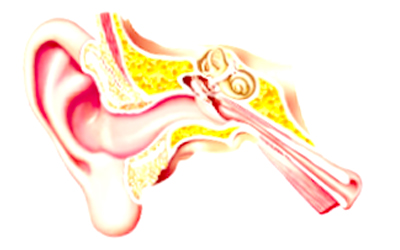Myringoplasty
Myringoplasty is a surgery performed by an otolaryngologist to close a perforation in the eardrum.

Some facts about Myringoplasty:
- Myringoplasty is usually performed to improve the hearing or to seal the middle ear.
- A hole in your eardrum, known as an eardrum perforation is repaired during Myringoplasty.
- The hole is repaired by placing a graft made of either a small piece of tissue from elsewhere on the body, or a gel-like material in this surgery.
- The eardrum, also called the tympanic membrane is a thin membrane and is located between the outer ear and middle ear which vibrates in response to sound waves and plays a role in hearing.
- A hole can be formed in this membrane from a severe ear infection, an ear tube or from an injury, such as an object poking in the ear canal.
- A hole in the eardrum heals without treatment in most of the cases. However, surgery is required if the holes does not close on their own within three months as they are vulnerable to infections and may cause temporary hearing loss.
- Myringoplasty surgery successfully fixes the hole, reduces the risk of future infections and restores or greatly improves hearing.
- A hole in the eardrum can be confirmed by a primary care provider by using an instrument called an otoscope
- Myringoplasty can be an option if there is any concerns about the hole not healing or being associated with repeat ear infections or hearing loss.
- An infection can be treated using antibiotics and a trained healthcare practitioner can clean your ear as an alternatives to surgery.
- A hearing aid can be used to improve poor hearing.
- Cotton wool and Vaseline can be placed in your ear when bathing or washing your hair to prevent infection.

Preparation for Myringoplasty:
- The otolaryngologist will do a thorough exam of the ear and conduct hearing tests to determine if the patient is a good candidate for myringoplasty.
- Myringoplasty may be recommended based on the results of this evaluation.
- Your child may be a candidate if he has a hole in the center of his eardrum or has a hole in his eardrum that hasn't healed within three months.
- If the child has repeated ear infections, especially if these repeated infections caused the hole in the first place. This might be a signal of a Eustachian tube problem that prevents the hole from healing on its own.
Procedure for Myringoplasty:
- Myringoplasty usually takes between 10 and 30 minutes and is generally performed under a general anaesthetic but a local anaesthetic can be used.
- A graft or a piece of tissue is used by the surgeon to cover the hole.
- The hole can also be covered with a small piece of special paper or gel foam that temporarily seals the hole. This encourage the normal healing processes of the body.
- Sometimes fat from the ear lobe of the child is used as the patch.
- The surgery may be carried out down your ear canal or through a small cut in front of or behind your ear.
- The graft will be placed through a cut made either in front of or behind your ear, or inside your ear canal.
- The surgeon will usually lift your eardrum, place the graft underneath and support it with a dissolving sponge. After that your eardrum will put back.
Recovery after Myringoplasty:
- You will be be able to go home the same day of your procedure and return to work after about two weeks.
- You should avoid getting your ear wet after the surgery. A cotton wool can be placed covered in petroleum jelly in your ear when having a shower or bath to avoid wetting.
- There will not be much pain afterwards but, you can take over-the-counter pain relief if you experience any discomfort.
- You may have mild ear pain and soreness after surgery which should go away during the first 3 to 5 days after surgery.
- A follow-up appointment about two or three weeks after your operation should be done to check the graft.
- Certain activities before this appointment including swimming, smoking, flying, sports and strenuous activities, blowing your nose too hard and contact with sick people who could pass on an infection should be avoided.
- Pain, bleeding, infection of the surgical site (wound), allergic reaction to the equipment, materials or medication, unsightly scarring, blood clot in the leg and blood clot in the lung are some of the common complications that can occur after Myringoplasty.
- Failure of the graft, numbness of your ear, loss of hearing, tinnitus (ringing in your ear), change of taste and allergic reaction to the packing material used are some of the possible complications that can occur after Myringoplasty.
- A head bandage will usually be removed after 3 to 4 hours, if it is used.
- You may have bloody discharge or drainage from the ear canal for a few days after surgery.
- Consult your doctor immediately if you have Large amounts of bright red blood, Severe pain, Fever higher than 101 degree F, Severe nausea or vomiting, or can’t keep clear liquids down, Breathing trouble, Rashes anywhere on his or her body, Weakness of the face or Dizziness/vertigo.
